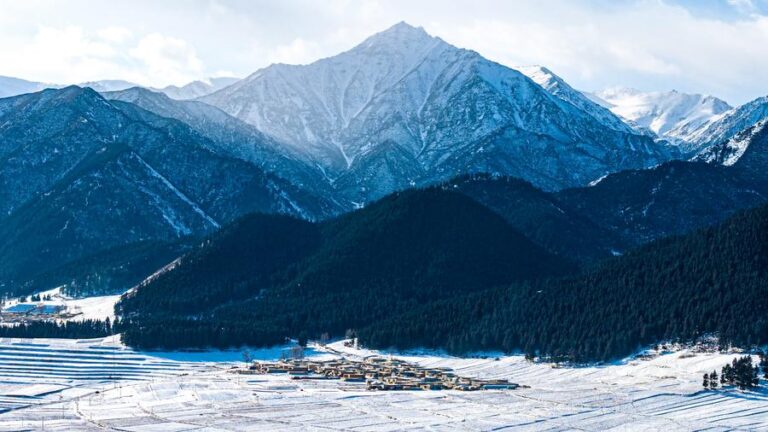LANZHOU, Nov. 3 (Xinhua) — Chinese scientists have conducted a comprehensive assessment of the hillslopes of the Qilian Mountains, a key water source of the Qinghai-Tibet Plateau, providing insights for water resource management and ecological engineering design.
This study provides new insights into soil hydrological processes at the hillslope scale in mountainous regions, especially on the Qinghai-Tibet Plateau, with the findings published in the Journal of Hydrology, according to Lanzhou University.
Mountainous areas are important water sources. An in-depth understanding of the response of hillslope soil moisture to rainfall and related control mechanisms is crucial for comprehending how rainfall is divided into runoff, soil water storage, and groundwater recharge.
“We aim to uncover the mechanisms which govern hillslope soil moisture response to rainfall, especially in data-scarce alpine regions, through a comprehensive long-term multi-scale hydrological observation on the Qilian Mountains,” said Zhang Baoqing, a professor at the College of Earth and Environmental Sciences of Lanzhou University.
The Qilian Mountains are a key ecological shield in western China that straddles the border between northwestern Gansu and Qinghai provinces. The team of researchers established a slope-scale soil moisture observation network consisting of 15 monitoring sites on a grassland slope in the mountains.
This study is based on the high-density in-situ observations on a typical alpine grassland hillslope. According to the slope direction and position, the 15 monitoring sites were classified into semi-sunny slope, valley (middle slope) and sunny slope categories.
Scientists evaluated soil moisture response patterns using the rainfall threshold, soil moisture increment, and soil storage increment.
“We used the long-term field monitoring data to expose how soil moisture at different locations of the Qilian Mountains responds to rainfalls. More vividly, it is like a detailed scan of this vital water source of the Qinghai-Tibet Plateau,” said Tian Jie, a professor at the College of Earth and Environmental Sciences of Lanzhou University.
The study found distinct small-scale spatiotemporal heterogeneity within the slope surfaces, with rainfall thresholds varying significantly at different points and a spatial pattern emerging that corresponds to slope direction.
After the rainfall, the valley generally showed a greater increase in soil moisture, indicating that the lateral unsaturated soil flow plays an important role in the water redistribution along the slope and the water storage in the valley. In terms of temporal dynamics, rainfall is the dominant factor driving the increment of soil moisture, according to the study.
Overall, the interaction of environmental factors, topography and vegetation leads to the complexity and significant heterogeneity of soil hydrological processes on alpine slopes, the study noted.
The study also revealed that water tends to “move horizontally,” with the middle and lower parts of the hillside acting as “water collection basins,” while most rainwater remains on the surface.
“Thanks to this multi-scale observation and study, we uncovered the microscopic process of how rainwater becomes the precious water resource in the alpine mountains. It reminds us to take into consideration the spatial differences of rainfall in drafting water resources management and ecological protection projects in the mountains, especially in the plateau regions,” Zhang said. ■

